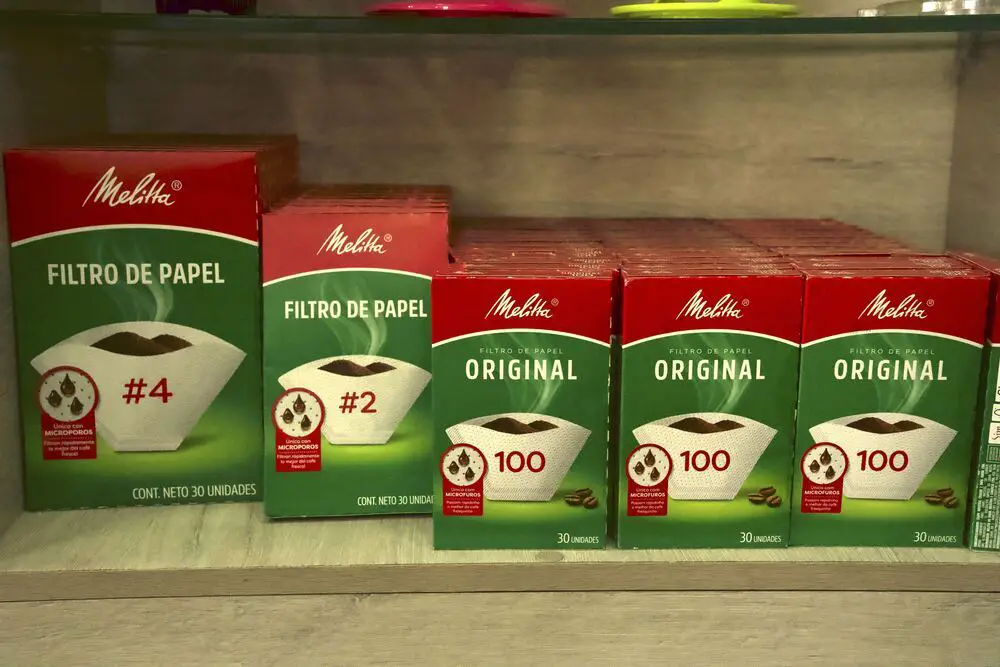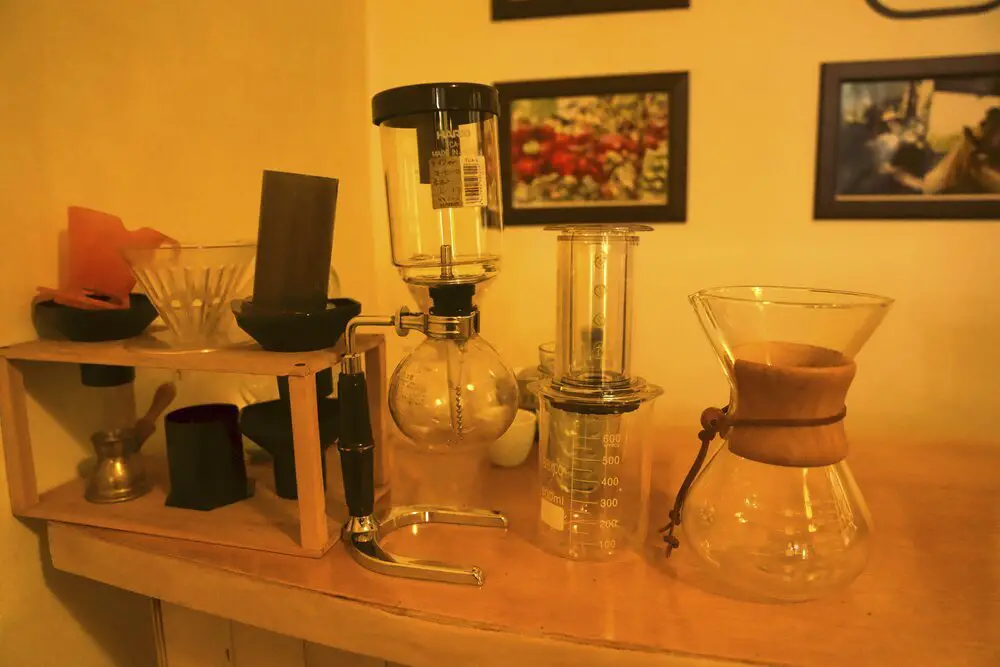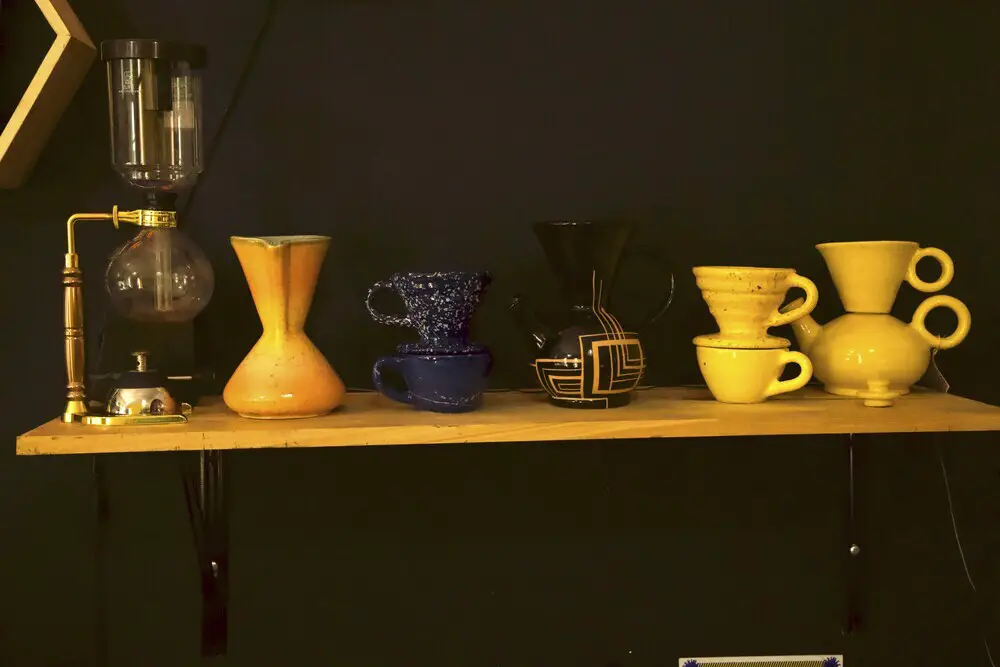The coffee filter is one of the most important utensils when preparing coffee.
Table of Contents
What is a coffee filter and when was it invented?
The coffee filter is a tool that separates the coffee grounds from the liquid coffee during extraction.
The first coffee filter dates back to 1908 and was invented by entrepreneur Melitta Bentz in Dresden (Germany). The inventor’s intention was to eliminate the bitter taste of coffee caused by overbrewing during coffee preparation.
Nowadays there are models made of paper, fabric or metal, both disposable and reusable.
Types of coffee filters
Paper filter
Paper filters remove most coffee oils and sediment, leaving you with a clean, clear cup of coffee.
- They usually have the shape of a cone or a basket.
- They cannot be washed and must be disposed of after use.
- Paper filters heavily filter the coffee so that it has a lighter, smoother and lighter body.
- There are colored and non-colored paper filters. The former are bright white in color and are notable for not leaving a papery taste in coffee, while the latter are brown in color and usually leave some papery taste in coffee.
- This type of filter is usually used for the Melitta, Chemex and V60 coffee machines.
Metal filter
Metal coffee filters consist of a fine stainless-steel mesh that filters out most of the coffee powder from the coffee while allowing the coffee oils to pass through. The oils are largely responsible for the taste of the coffee.
- These filters don’t strip as much flavor from the coffee, so you get a more flavorful coffee with more flavor and substance.
- Metal filters generate no waste and can be used for many years if cared for properly.
- Metal filters can easily be cleaned in the dishwasher.
- Metal filters have a wide variety of shapes, depending on the area of application.
- This type of filter is usually used for the Italian coffee maker and the espresso machine.
Cloth filter
Cloth filters are part of the everyday and basic use in our households.
- Cloth filters can be washed but are more difficult to maintain as they need to be rinsed thoroughly after each use.
- Cloth filters usually come in the shape of a cone.
- Cloth filters remove a large amount of sediment while retaining some oils. An aromatic, full-bodied coffee with a medium body is obtained.
- Cloth filters are not recommended for the preparation of coffee specialties. They have a fabric structure and are reusable, and they can accumulate residues that significantly affect the taste of the drink.
- Are typically used on Chemex and V60 coffee makers.
Choosing a coffee filter
Material
Coffee filters are made of different materials. You should choose the one that best suits your taste, as each one has different characteristics.
Size
Most filter baskets are sold in numbered sizes from 8 to 12 cups of coffee, which is the standard size for most drip coffee makers.
However, conical filters tend to come in a variety of sizes, the most common being #1, #2, #4, and #6.
Filter #1: They are designed to extract a single cup of coffee.
Filter #2: These are larger and can be used for 2 to 6 cups.
Filter #4: Equivalent to basket filters for 8 to 12 cups of coffee.
Filter #6: These are the largest and least used filters as coffee makers are not designed for these large filters.
Quality
Regardless of which type of filter you choose, you should prioritize quality. Remember that poor quality will make your coffee taste bad.
How should coffee filters be used?
In order to obtain a drink in optimal conditions, the filters must be inserted correctly. Below we explain step by step how to proceed depending on the device type.
Manual machines
- Boil the water and put the filter in the coffee maker.
- Pour the hot water into the filter without the coffee to remove any impurities that might otherwise get into the drink.
- Discard the spilled water used to clean the filter and boil water again.
- Allow the filter to cool for 40 seconds, then pour the required amount of coffee into the filter.
- First moisten the coffee with some hot water.
- Pour the remaining water into the filter in a circular motion until the brewing process is complete. This process should take about 4 minutes.
Electrical machines
- Pour the amount of water to be used into the container provided with the coffee maker.
- Place the filter in the appropriate area.
- Put the desired amount of coffee in the filter.
- Turn on the coffee maker.
- The water is heated to boiling point so that it rises from the tank and pours over the coffee that was previously placed in the filter.
- The finished coffee then flows into a container that sits on a hotplate that keeps the filter coffee hot.
Alternatives for coffee filters
Paper towels
Paper towels are made of porous paper that allows liquid to flow through. Therefore, they are an excellent replacement for coffee filters.
Reusable tea bags
These are cotton bags that can be used as coffee filters.
Mesh screen
A kitchen utensil that can serve as a coffee filter.
Cheesecloth
This is a thin piece of fabric that is great as a filter because of its delicacy.
Cloth napkins
Cloth napkins are finely woven, making them an excellent alternative to coffee filters.
Gauze
A woven cotton cloth that can serve as a coffee filter.
What happens if I don’t filter my coffee maker?
Consuming unfiltered coffee can cause heart problems, according to various studies by the European Society of Cardiology.
In this regard, you should consider that a cup of unfiltered coffee contains diterpenes, that is, oily substances found in coffee beans.
These substances can increase cholesterol levels and thus increase the likelihood of heart attacks or strokes.
So always remember that a cup of unfiltered coffee contains about 30 times the concentration of oily substances than filtered coffee.
Conclusion
Coffee filters are very important to get the ideal taste in your drink.
For this reason, you should choose very well the filter you are going to use.
Think of all the factors that need to be considered to get the most out of your coffee filters.



